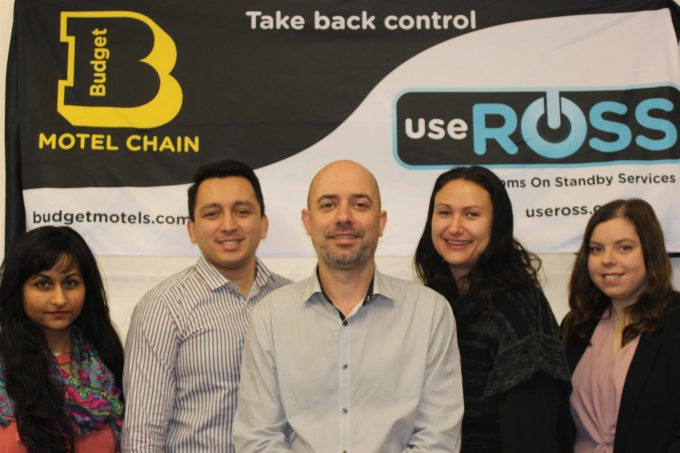End of June Fast Approaching – What do we Need to Consider?
The 2011 federal budget delivered a mix of taxation and related announcements that will provide some incentives for personal and business taxpayers, while removing some perceived tax benefits for others.
With 30 June 2012 fast approaching, a reminder of some of those changes for you to consider are outlined below:
– Australian small businesses with a turnover of less than $2 million will be provided with an instant tax write-off of the first $5000 of any motor vehicle purchased during the 1 July 2012 to 30 June 2013 financial year.
– The current vehicle fringe benefit tax rate will change to a flat 20% of the vehicle’s capital value. This new measure applies to all new vehicle contracts entered into since 10 May 2011.
– Changes to the small business Pay As You Go tax regime – essentially the ATO will not increase the PAYG tax instalments by as much as previously legislated (4% instead of the proposed 8%) as a result of the global financial crisis.
– Changes to the Low Income Tax Offset – the claimable proportion of the LITO through PAYG is increased from 50 to 70%.
– Reform of the superannuation contribution regime – individual taxpayers aged 50 years and over with less than $500,000 in superannuation can contribute $25,000 more per year than other individual taxpayers from 1 July 2012.
– The Australian government is set to introduce a reporting regime for payments to contractors in the commercial cleaning industry, amongst others.
For the first time in nine years, there were no personal tax cuts – taxpayers will in fact pay more personal tax when the new flood levy applies in the 2012-2013 financial year. Management rights owners in flood affected areas may be eligible for tax relief from the new flood levy – consult your accountant to ascertain your eligibility.
Instant write off of the first $5,000 of any motor vehicle purchased – the Australian government will provide an instant tax write-off for Australian small businesses with a turnover of less than $2 milliom for the first $5000 of any motor vehicle purchased from the 2012-13 financial year. The remainder of the purchase value can then be transferred into the general small businesses depreciation pool, which is depreciated at 15% in the first year and 30% in later years.
These new measures supplement other measures for small businesses previously announced for 2012-13, including the immediate write-off of assets valued at under $5000, and a single depreciation pool at the rate of 30%. An additional tax saving for incorporated small businesses is the fall in the company tax rate for 2012-13 from 30% to 29%.
If you are considering the purchase of a new motor vehicle for your business, I suggest you hold off until 1 July 2012 to take advantage of this new tax incentive. As stated in my article last month, that doesn’t mean you should order a Ferrari, perhaps something a little less expensive!
Fringe Benefits Tax changes for company cars – The current mileage-based valuation (referred to as the Statutory Method) of vehicle fringe benefits will change to a flat 20% of the vehicle’s capital value. The new measure will apply to new vehicle contracts entered into after 7:30pm on 10 May 2011 and will be phased in over four years.
Existing vehicle contracts will continue to be subject to the previous statutory rates. Taxpayers electing to use the Statutory Method are charged FBT on a percentage of the capital value of the vehicle based on the kilometres travelled in a year. This ranges from 26% for fewer than 15,000kms travelled up to 7% for more than 40,000kms travelled.
This will provide an immediate benefit for employees entering into salary sacrificed motor vehicle arrangements and travelling less than 15,000kms per year as they will gain the benefit of the new rate immediately. Employees travelling more than 25,000kms per year will gradually lose their current FBT advantage over the next three years. In short, the practice of salary sacrifice of motor vehicles for employees will not be as generous as it has been for most taxpayers in the past; however there is still a financial benefit to be gained.
Small business Pay As You Go – Income tax instalments paid under PAYG will be reduced using the gross domestic product adjustment method for one year: 2011-2012. PAYG instalments in the 2011-12 financial year will be set at 4% above a small business’s taxable income for the previous year (originally to be set at 8% above), representing half the statutory rate that would have otherwise applied.
The GDP adjustment method is used by the majority of taxpayers required to pay quarterly income tax instalments: mainly small businesses but also some individuals, certain trustees and small superannuation funds.
This measure provides a significant cash flow benefit to management rights owners who will be required to remit less income tax instalments in the 2011-2012 financial year.
Changes to Low Income Tax Offset – From 1 July 2011, the proportion of the LITO that can be claimed through PAYG is increased from 50 to 70%. LITO delivers a benefit of up to $1500 and phases out at the rate of 4 cents for every dollar exceeding $30,000 and a complete phase out when the $67,500 threshold is reached.
From 1 July 2011, minors will no longer be able to use LITO to reduce income tax payable on their non-work income, such as dividends, interest and/or rent. This measure effectively results in an end to the long held tradition of distributing family trust income to minors to obtain a tax benefit. For the 2012 financial year and beyond the annual amount that could be distributed has been dramatically reduced from $3333 per child to just $416 per child.
Most management rights owners operate their business through a proprietary limited company as trustee for a discretionary trust. Apart from the sound taxation benefits received over many years (now reduced as outlined above but still in place) there are distinct advantages to continuing with these structures – foremost is the level of asset protection provided and the ability to access capital gains tax concessions through this structure.
Reform of Superannuation Excess Contribution regime – Eligible individuals who breach the concessional superannuation contributions cap by up to $10,000 will be provided with a one-off option to request any excess contributions to be refunded to them. This new refund option will only apply to first time breaches from 1 July 2011. The changes will give individuals the option to take excess concessional contributions out of their superannuation fund to have assessed as income at their marginal tax rate, rather than the excess concessional contributions tax rate of 31.5% (in addition to the 15% contributions tax for the fund).
Since 2009-10, the concessional contributions cap has been set at $25,000 (or $50,000 for those aged 50-74 years until 30 June 2012). The Australian government has proposed that individuals aged 50 years and over, with less than $500,000 in superannuation, can contribute $25,000 more per year than other individuals from 1 July 2012 – good news for many management rights owners.
Reportable taxable payments for the commercial cleaning industry – A proportion of businesses in the building and construction industry will be required to report annually on payments made to contractors. The reporting regime will require these businesses to report information that they should currently be collecting under existing tax arrangements. The Australian government will also consult publicly on options to introduce a similar reporting regime for payments to contractors in the commercial cleaning industry.
If you are in any doubt as to the method in which you engage cleaners in your management rights business, consult with your accountant to ensure you are not exposed to any unnecessary scrutiny from federal and state government bodies such as the ATO and WorkCover and from other legislative requirements such as superannuation.
The information, recommendations, opinions or conclusions provided above are generic in nature and do not express individual advice. You should always consult your professional representatives before taking any action.
Tony Rossiter
Holmans

AccomNews is not affiliated with any government agency, body or political party. We are an independently owned, family-operated magazine.




